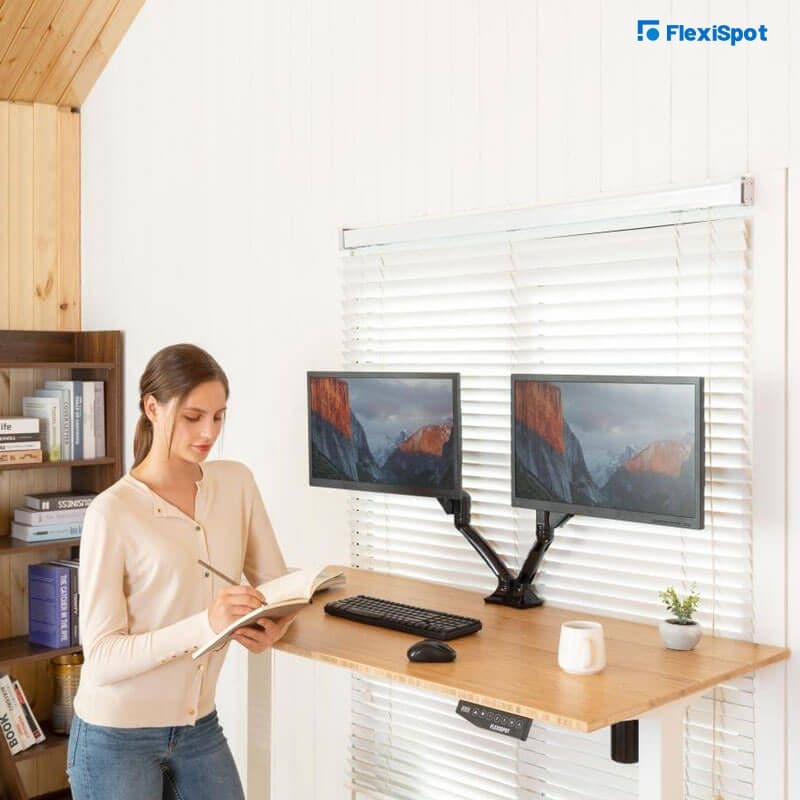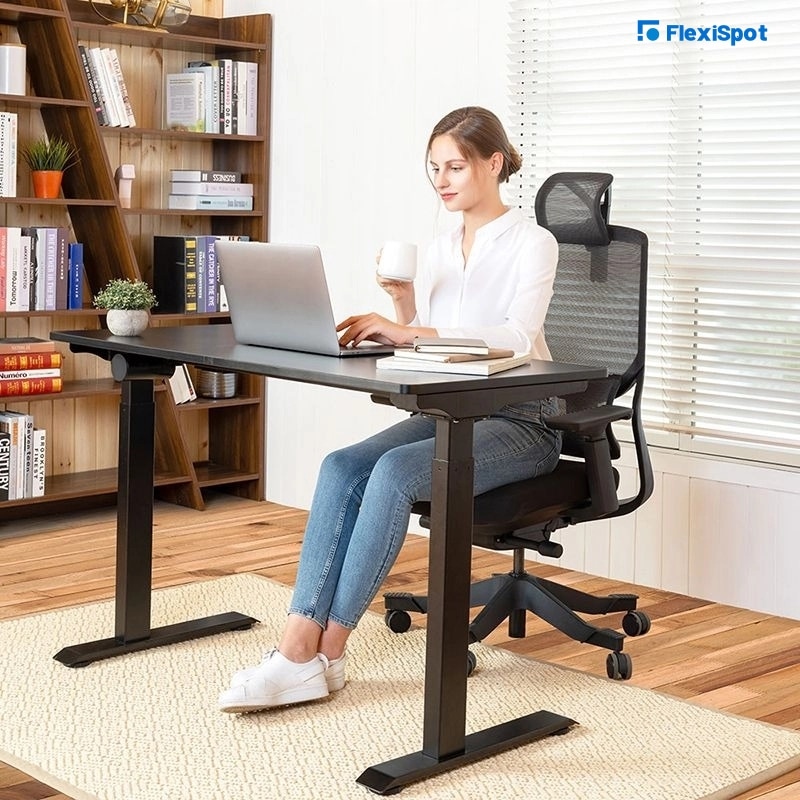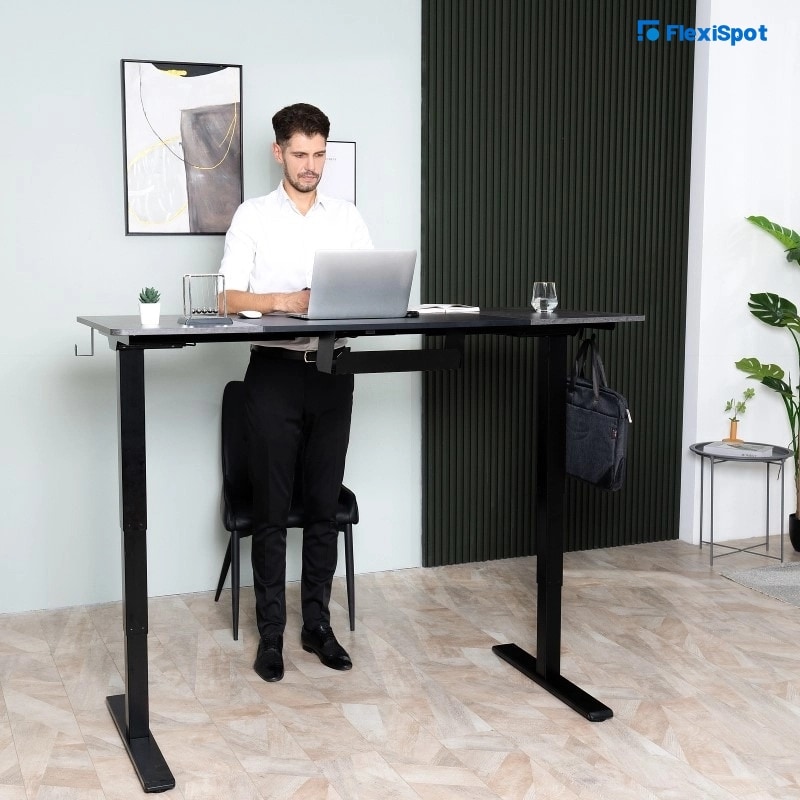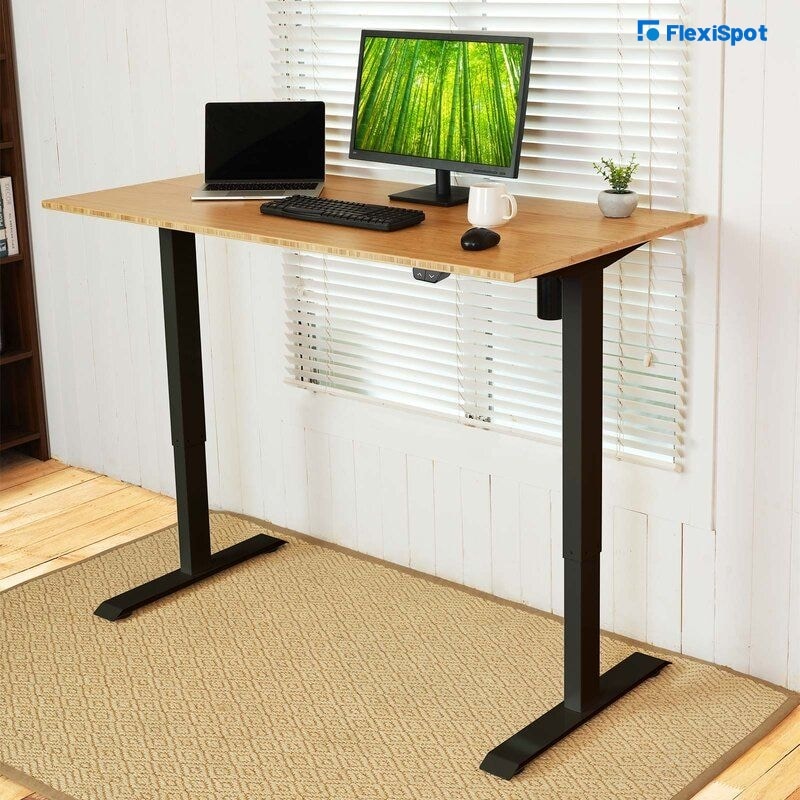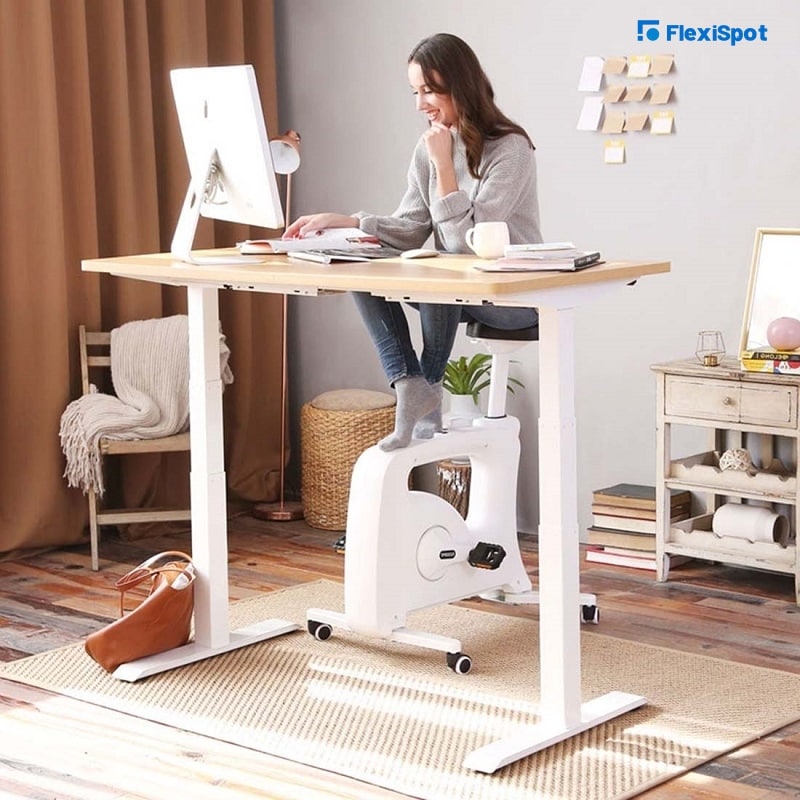What is one thing that may be very harmful to your health yet that we all do daily? Sitting. People who sit for long periods have a higher risk of heart disease and diabetes. It's also been connected to weight gain and obesity. This is a huge issue for office employees, who spend most of their time sitting. Your company may profit from a healthy workforce by buying in standing desks for everyone.
If you want your employer to get standing desks for the office, here is how to convince your employer to invest in standing desks.
Preparation is Key
You'll need to plan for the meeting if you really want to persuade your boss to purchase a standing desk. Your ideas don't have to be presented in a forty-slide Powerpoint presentation, but they should be well-considered and delivered in a straightforward way. The idea is to start by concentrating on how the acquisition will help the business.
Don't begin with a discussion of the desk's characteristics since, very frankly, senior management will be uninterested. They have to ensure you have the tools you need to do the work and that the firm stays in the black. If you can link the purchase of a standing desk towards the attainment of their objectives, it will be much simpler to persuade them.
The economic effect, the impact on productivity, as well as the impact on employee engagement are the three primary areas that should assist you in making your case and winning clearance. These three categories are intertwined and work together to strengthen the business. All you have to do now is demonstrate to the people in upper management that this is doable.
Financial Implications
When examining purchases for approval, managers often concentrate on the immediate expense. They may overlook the long-term advantages and favorable influence on the company's financial performance depending on the judgment deadline and if the expenditure may be spread over time. Your job is to persuade them that the "expense" of the standing desk is really an "investment" in the company's long-term objectives.
According to the Gallup-Healthways Well-Being Index, 77% of employees have at least one chronic health problem: cancer, asthma, high cholesterol, depression, high blood pressure, diabetes, heart attack, or obesity. The overall cost of missed productivity for these employees owing to absenteeism was $84 billion per year.
Unscheduled absenteeism is a persistent issue for U.S. firms, conservatively incurring $3,600 per hourly worker per year and $2,650 per full-time worker per year. Sick days, FMLA time, workers compensation cases, and disability are all included in this report as unscheduled absences.
The following are cost variables associated with absenteeism:
Wages are given to workers who are unable to work.
Replacement workers at a high cost (overtime compensation for other workers and/or contract workers)
Managing absenteeism has administrative expenses.
The following are some of the indirect costs and repercussions of absenteeism:
Due to overtime weariness or understaffing, the quality of goods/services suffers.
Productivity declines
Time spent by the management in excess (looking for suitable replacements for employees and managing discipline)
Concerns about safety (employees that aren't properly trained to fill in for absentees or rushing to find a replacement can increase safety issues)
Employees that have to time in or undertake additional work to compensate for missing peers have low morale.
It is clear that absence is a high cost for businesses. Many cases of absenteeism are linked to long-term health issues. According to studies, initiatives aimed at improving employee health may cut absenteeism by up to one-third. Standing desks assist in lowering the risk of certain medical concerns by reducing the number of time workers spend sitting. Reduced employee absenteeism expenses, a rise in group healthcare coverage premiums, or workers' compensation claims are all financial benefits of investing in standing desks.
Productivity Impact
After you've spoken about the financial advantages of using a standing desk, the talk should turn towards its effect on productivity. Using a standing desk boosts creativity, productivity, and idea-sharing, according to many case studies. According to Business Insider, FF Venture Capital installed standing desks in its conference rooms after noticing that standing encouraged staff to share ideas more actively.
Standing desks are available as part of Google's and Facebook's employee health initiatives. Standing desks are used by more than 250 employees at Facebook, who claim that they maintain the energy level in the workplace high. In an encounter with the Wall Street Journal, Greg Hoy, a Facebook employee, remarked, "I don't get the 3 o'clock slump anymore; I feel productive all day."
Standing desks may help enhance an employee's attention, sustain greater energy levels, and boost concentration throughout job completion, in addition to increasing employee health and lowering absenteeism. Employee productivity is increased as a consequence of these advantages.
Employee Participation
For decades, the Gallup Organization has promoted the impact of the employee on corporate success. Employees that are engaged in their work are happier overall and more productive, according to Gallup's study. Their research also shows that organizations with engaged employees recover quicker from recessions and earn more per share.
Gallup discovered that robust relationships between employee engagement and their performance exist across a wide range of enterprises, sectors, and geographic locations. They observed that organizations scoring in the top half on employee engagement virtually quadrupled their chances of success compared to those in the bottom half when evaluating the variations in performance between actively disengaged and engaged personnel.
When employees believe their employers care about them, they are more prone to engage. When companies give standing desks on demand, it shows that they care about their workers' health and are interested in investing in their well-being.
Going Green
The office can also paint this as a sustainable and green initiative. As more and more consumers care about sustainable workplaces and prefer businesses that take care of their employees' health, it can be beneficial for the management to think about this investment carefully.
Firstly, you can choose a sustainable desk made from bamboo materials like the Adjustable Standing Desk Pro Series. Bamboo actually has a tensile strength that is even better than steel. This means that the office can expect a long lifespan for the desk and not have to worry about purchasing more in the future. The desk also has a quiet motor that lifts the desk into standing mode without any noise, which can be great for the office environment.
It is important to select such materials since plastics and other types of materials made from unsustainable sources end up in our oceans and already overflowing landfill sites. Since the employees will be healthier overall, which is better for the environment too, your management will see the benefits of the standing desk soon enough.
Employee Well-being
Sitting all day at the desk can definitely increase back and neck pain. If the desk and chair that you have chosen for the office aren’t ergonomic, they may be doing more damage than good. Employees need to look for healthier options while working. A standing desk can actually help decrease back and neck pain! The Take a Stand Project found that 54% of employees who stood for 66 more minutes every day faced less back pain.
Standing desks have also been found to improve the mood of the employees. Employees who stand for 66 more minutes feel healthier, happier, invigorated, and focused. This can directly impact the productivity and efficiency of work being done. Employees who feel better will be more motivated to complete their tasks on time.
Standing desks are also great for maintaining your weight and fitness. Sitting all day long can result in quite significant weight gain, especially around the hips and thighs. Standing for just an hour every day can help you burn calories while you are at work.
In Conclusion
It's vital to concentrate on the company's advantages first when figuring out how to convince your employer to invest in standing desks. To bolster your arguments, consider the impact on productivity and staff engagement. Management will be more willing to entertain your proposal if you've proved that you worry about the company's growth.
